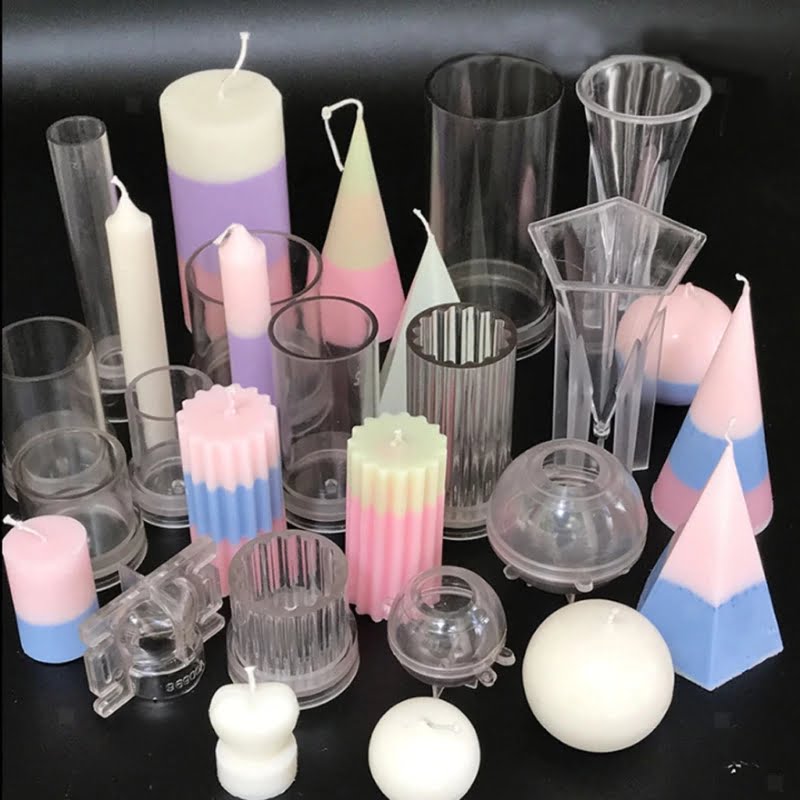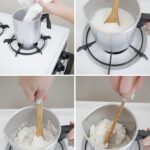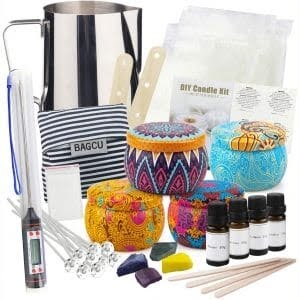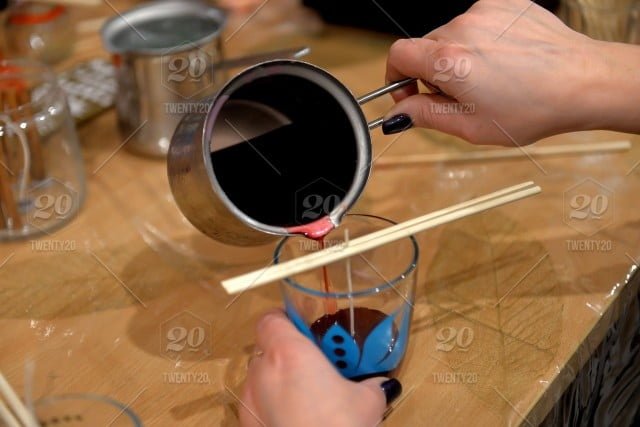When it comes to making candles, one of the most crucial aspects to consider is choosing the right wick. The wick plays a vital role in how the candle burns, as it determines factors like burn time, flame height, and overall performance. With so many options available, it can be overwhelming to decide which wick to use for your candle-making projects.
In this comprehensive article, we will delve into the world of candle wicks and explore various options that can be used when making candles. From traditional choices to unconventional ideas, we will cover a wide range of materials that can serve as an effective wick. Additionally, we will also discuss eco-friendly alternatives for those who prefer natural options.
One aspect that may surprise you is the vast array of everyday household items that can double as an efficient wick. We will highlight some unexpected objects that you may already have at home and demonstrate how they can be repurposed for candle-making purposes. Whether you’re looking to experiment or simply want to make use of readily available resources, these household items may offer unique and budget-friendly solutions.
Join us on this enlightening journey as we explore the importance of selecting the right wick for your candle-making adventures. Gain a deeper understanding of the role a wick plays in candle burning and learn about various materials traditionally used as wicks. Discover surprising household items that can serve as effective alternatives and explore eco-friendly options that are better for both you and the environment.
By the end of this article, you’ll have a wealth of knowledge on how to test and choose the perfect wick for your candles while troubleshooting common issues along the way. So let’s dive in.
Understanding the Role of a Wick in Candle Making
A wick plays a crucial role in candle making as it is responsible for drawing up the melted wax to fuel the flame and keep it burning steadily. To understand the importance of choosing the right wick, it is essential to have a detailed explanation of how a wick functions and its impact on the overall quality of a candle.
When a candle is lit, heat from the flame melts the wax near the wick. The liquid wax is then drawn up through capillary action into the tiny channels within the wick. As the liquid reaches the flame, it vaporizes, providing fuel for combustion and creating a steady, consistent burn.
The size and composition of the wick greatly influence how effectively this process occurs. If a wick is too small or made from dense materials, such as cotton with additives or zinc cores, it may not be able to draw up enough liquid wax to keep an even burn.
On the other hand, if a wick is too large or made from highly porous materials, like certain types of braided cotton or paper core wicks, it can result in excessive fuel flow and lead to flickering flames or uneven burning.
To ensure that your candles burn properly and achieve their desired effect, it is essential to carefully consider factors such as candle size, wax type, fragrance load, and container type when choosing an appropriate wick. Conducting test burns with different wicks can help determine which one provides optimal results for specific candle-making projects.
Wick Size Chart
| Candle Diameter (inches) | Recommended Wick Size |
|---|---|
| 1-2 | Small |
| 2-3 | Medium |
| 3-4 | Large |
| 4+ | Extra Large |
By understanding the detailed explanation of a wick’s role in candle making, you can make informed choices when selecting the right wick for your candles. Whether you are aiming for a long burn time, minimal soot production, or specific aesthetics, the proper choice of wick will contribute significantly to the overall performance and appearance of your homemade candles.
Traditional Wick Options
When it comes to making candles, choosing the right wick is crucial for achieving a successful and safe burn. While there are various options available on the market, it’s important to understand the different materials used in traditional wicks and their specific characteristics. This section will explore commonly used materials for wicks in candle making.
1. Cotton Wick:
Cotton wicks are one of the most popular and widely used options in candle making. They are known for their clean burn, minimal soot production, and ability to hold up well in various types of wax. Cotton wicks come in different sizes and can be either flat-braided or square-braided. Flat-braided cotton wicks are often preferred for container candles, whereas square-braided cotton wicks work best for pillar or taper candles.
2. Paper Core Wick:
Another common material used in traditional wicks is paper core. These wicks consist of a braided cotton outer layer with a paper core running through the center. The paper core provides additional rigidity to the wick, which helps it stand upright during burning. Paper core wicks are widely used in votive candles and those made from softer wax blends.
3. Zinc-Core Wick:
Zinc-core wicks are known for their rigidity and ability to provide a controlled flame height. These types of wicks have a zinc core running through the center, which allows them to be self-trimming as they burn down. They are commonly used in container candles made from harder wax blends such as soy or paraffin.
4. Hemp Wick:
For those looking for natural alternatives, hemp wicks can be an excellent option. Made from spun hemp fibers, these wicks offer a slow and even burn with minimal sooting. Hemp wick does require pre-waxing before use, but it offers an eco-friendly and sustainable alternative for environmentally conscious candle makers.
By understanding the different materials used in traditional wicks, candle makers can make informed decisions based on their specific needs and preferences. However, it’s important to note that the choice of wick also depends on factors such as candle shape, size, fragrance load, and wax type. Experimentation and testing may be necessary to find the perfect match for your candle-making adventures.
Surprising Everyday Household Items that Can Serve as an Effective Wick
When it comes to making candles, the traditional wick options like cotton or hemp may be the most commonly used materials. However, there are actually a surprising number of everyday household items that can serve as effective wicks for your homemade candles. Not only can these alternative wicks add a unique touch to your candle-making process, but they can also help you get creative and repurpose items that you might already have at home.
One surprising household item that can be used as an effective wick is a piece of spaghetti. Yes, you read that correctly. Spaghetti can make a great alternative wick because it is made from wheat flour, which is highly flammable.
Simply insert a piece of uncooked spaghetti into the base of your candle, making sure it reaches down into the melted wax. The spaghetti will absorb the melted wax and act as a wick when lit. This is not only a cost-effective option but also allows for some fun experimentation with different colors and flavors of pasta.
Another household item that can be used as an effective wick is a strand of yarn or string. Yarn or string usually consists of natural fibers like cotton or wool which are flammable and can burn steadily.
To use yarn or string as a wick, cut it to the desired length and soak it in melted wax for several hours before using it in your candle-making process. This will ensure that the yarn or string is fully saturated with wax and ready to be used as an efficient and unique wick.
In addition to spaghetti and yarn, other household items such as paper clips, toothpicks, and even wine corks can also serve as effective wicks for your homemade candles. Keep in mind that experimenting with unconventional wicks may require some testing to find the right burn rate and performance for your specific candle size and wax type. It’s important to monitor each alternative wick option closely during testing to ensure proper safety precautions are taken.
Overall, the use of surprising everyday household items as wicks in candle making can not only provide a cost-effective solution but also add a creative element to your homemade candles. By exploring these unconventional options, you might discover new and unique effects that enhance the overall aesthetic of your candles. Whether you choose to use spaghetti, yarn, or any other unconventional material, don’t be afraid to think outside the box and have fun with your candle-making adventures.
| Household Item | Advantages | Disadvantages |
|---|---|---|
| Spaghetti | Cost-effective; allows for experimentation with different colors and flavors | Potential difficulty in finding the right burn rate; may require testing and monitoring during use |
| Yarn or String | Made from natural fibers; can be easily saturated with wax for efficient burning | Must be soaked in melted wax for several hours before use; may require testing for optimal performance |
| Paper Clips | Durable and readily available; can be bent to desired shape for easy insertion into candle base | Metal material may affect burn rate and performance; requires close monitoring during use |
Natural Alternatives
When it comes to candle making, there are a multitude of options available for wicks. While traditional wick materials such as cotton and hemp are commonly used, many people are embracing eco-friendly alternatives for their candle-making endeavors. In this section, we will explore some natural alternatives that can serve as effective wicks.
One eco-friendly option for wicks is bamboo. Bamboo is a sustainable and renewable resource that grows quickly, making it an environmentally friendly choice. Its hollow structure allows for optimal wax absorption, providing a steady and even burn. Bamboo wicks also offer a clean and soot-free flame, making them perfect for those who prioritize air quality in their homes.
Another natural alternative is wood. Wood wicks have gained popularity in recent years due to their unique crackling sound when lit and their ability to burn longer than traditional cotton wicks. They are typically made from sustainable materials such as cherry wood or birchwood. Wood wicks provide a beautiful aesthetic to candles with their rustic charm and are often seen in container candles or larger pillar and jar candles.
In addition to bamboo and wood, other plant-based fibers can also be used as eco-friendly wicks. Some examples include flax, linen, or even dried grasses like straw or rush plant fibers. These natural fibers not only add a unique touch to your candles but also promote sustainability by reducing reliance on synthetic materials.
By opting for these natural alternatives as wick options, candle makers can create environmentally conscious products that align with their values while still achieving excellent burning performance. Whether you choose bamboo, wood, or other plant-based fibers, these eco-friendly options allow you to enjoy the soothing ambiance of candles with peace of mind knowing that you are choosing more sustainable choices for your craft.
Unconventional Wick Ideas
When it comes to making candles, sometimes the best wick options are right in our own homes. While traditional wicks made from materials like cotton and hemp are widely known and used, there are also some surprising everyday household items that can serve as effective wicks. These unconventional options not only add a unique touch to your homemade candles but also provide an opportunity for creativity and resourcefulness.
One unconventional yet highly effective option for a candle wick is a spaghetti strand. Yes, you read that right. Spaghetti works surprisingly well as a makeshift wick due to its ability to absorb and hold wax. Simply light one end of the uncooked spaghetti and watch it burn slowly, providing a consistent flame. This option is particularly popular among DIY enthusiasts who enjoy experimenting with different materials.
Another unlikely item found in most households that can be used as a wick is a shoelace. Shoelaces made from natural fibers like cotton or hemp work best for this purpose. They offer strong capillary action, allowing the wax to travel through the lace and fuel the flame steadily. Make sure to remove any plastic or metal aglets before using the shoelace as a wick.
For those who enjoy repurposing old items, consider using cut-up pieces of t-shirts as wicks. T-shirt fabric is usually made from 100% cotton or jersey material, which makes it ideal for absorbing wax and providing a steady burn. Cut the fabric into thin strips and roll them tightly before inserting them into your candle’s wax pool.
Thinking outside the box when it comes to candle wicks opens up endless possibilities for creativity and resourcefulness. However, it’s important to note that while these unconventional options may work well in certain scenarios, they may not always provide consistent results compared to traditional wicks. It is recommended to test these alternatives thoroughly before using them in large batches or selling them commercially.
Testing and Choosing the Perfect Wick for Your Candle
Choosing the right wick for your candle is crucial in achieving a clean, even burn and maximizing the scent throw. With so many options available, it can be overwhelming to narrow down which wick is best suited for your specific candle-making project. Fortunately, there are several tips and tricks you can follow to help you test and choose the perfect wick.
Consider the Diameter and Height of Your Candle
The size of your candle plays a significant role in determining the appropriate wick size. As a general rule of thumb, the wider the diameter or taller the height of your candle, the larger the diameter of wick you will need. If your wick is too small, it may not create a sufficient melt pool to release fragrance oils properly. On the other hand, if your wick is too large, it may result in excessive smoking or mushrooming.
Conduct Test Burns
Test burns are an essential step in determining which wick will work best for your candle. To begin testing, trim your wicks to a consistent length of about ¼ inch (0.6 cm). Light each wick and let it burn for at least two hours or until you achieve a full melt pool across the entire diameter of your container. Observe how well each wick performs in terms of flame height, smoke production, wax temperature, and fragrance distribution.
Take Notes on Performance
It’s crucial to keep track of how each tested wick performs during your test burns. Take notes on important factors such as burn time, flame stability, scent throw, and any issues encountered during burning (such as tunneling or uneven melting). These observations will help you narrow down which wicks perform better than others in terms of achieving an optimal burn.
Consult with Experienced Candle Makers
Don’t hesitate to reach out to experienced candle makers or join online communities dedicated to the art of candle making. These individuals can provide valuable insights and recommendations based on their experiences with different wicks. They can offer advice on specific wick brands, sizes, and materials that have proven successful for them in various candle-making projects.
By following these tips and tricks, you’ll be well-equipped to test and choose the perfect wick for your candle. Remember, every candle is unique, so don’t be afraid to experiment and adjust your wick selection accordingly until you achieve the desired results in terms of burn quality, scent throw, and appearance. With a little patience and perseverance, you’ll find the ideal wick that enhances both the aesthetics and performance of your handmade candles.
DIY Wick Making
Creating your own wicks for candle making can be a fun and cost-effective way to personalize your candles. Not only does it allow you to experiment with different materials, but it also gives you the freedom to customize the size and shape of your wick. In this section, we will provide you with a step-by-step guide on how to make your own wicks at home.
Step 1: Gather Your Materials
Before you begin making your own wicks, gather the necessary materials. You will need 100% cotton string or yarn, scissors, beeswax or soy wax flakes, and a clean work surface. It’s important to use natural materials like cotton or hemp because synthetic fibers may release harmful chemicals when burned.
Step 2: Cut Your Wick
Measure and cut the cotton string or yarn to your desired length. Keep in mind that the length of your wick should be slightly longer than the height of your candle container.
Step 3: Dip Your Wick in Wax
Melt your beeswax or soy wax flakes in a double boiler or microwave-safe container. Dip each cut piece of string into the melted wax until fully saturated. Then, hang them up to dry for a few minutes.
Step 4: Repeat the Dipping Process
Once the first layer of wax has dried, repeat the dipping process several times until you achieve the desired thickness for your wick. Each dip will add an additional layer of wax coating, resulting in a stronger and more effective wick.
Step 5: Trim and Store Your Wicks
After your homemade wicks have completely dried and hardened, trim off any excess wax at the top. You can now store your DIY wicks in an airtight container until you’re ready to use them for candle making.
Remember, experimenting with different techniques and materials can lead to finding your ideal homemade wick. Don’t be afraid to try out variations such as adding essential oils to the melted wax for fragrance or using different thicknesses of string or yarn. With practice, you’ll become more comfortable with DIY wick making and have the satisfaction of knowing that your candles are customized from start to finish.
Troubleshooting Wick Issues
When it comes to making candles, choosing the right wick is crucial for a successful burn. However, even with the perfect wick, issues can still arise during the candle-making process. In this section, we will explore some common problems that candle makers may encounter with their wicks and provide tips on how to fix them.
One of the most common issues that candle makers face is a phenomenon known as tunneling. Tunneling occurs when the wax melts only in a small tunnel formation down the center of the candle, leaving a significant amount of un-melted wax around it. This problem often arises when using wicks that are too small for the diameter of the container or have low heat output.
To fix tunneling, consider switching to a larger-sized wick or one with a higher heat output. By selecting a wick that provides enough heat to melt the entire surface of the wax pool in each burn session, you can ensure an even burn and prevent tunneling from occurring. Additionally, trimming the wick regularly to maintain it at an appropriate length will also aid in promoting proper and complete wax melting.
Another common issue is excessive soot production. Soot buildup not only affects the aesthetic appeal of your candle but can also cause health concerns and damage surrounding surfaces over time. Excessive soot production often occurs when using wicks that are too large for your container or contain impurities.
If you notice excessive soot production, consider switching to a smaller-sized wick or one made from higher-quality materials. Trimming the wick before each burn session will also help control soot production by preventing long and unstable flames. Additionally, make sure to use high-quality fragrance oils that are specifically formulated for candle making as certain fragrances can contribute to increased sooting.
By troubleshooting these common wick issues and following these tips, you can overcome obstacles in your candle-making process and achieve the desired results. Remember that finding the perfect wick may require some experimentation, so be patient and willing to adjust as needed. With practice, you will become a master at troubleshooting wick issues and create beautiful candles every time.
Conclusion
In conclusion, choosing the right wick for candle making is crucial to ensure a successful and enjoyable candle-making adventure. Understanding the role of a wick and exploring different options is key to finding the ideal wick that suits your needs and preferences.
Throughout this article, we have discussed the importance of selecting the right wick and provided detailed explanations on its role in candle making. We have explored traditional wick options, such as cotton or wooden wicks, which are commonly used materials.
Additionally, we have delved into surprising everyday household items that can serve as effective wicks, offering creative alternatives for those looking to think outside the box. Eco-friendly options have also been considered, highlighting natural alternatives for those seeking sustainable choices.
Testing and choosing the perfect wick has been outlined in this article with helpful tips and tricks. It is always recommended to experiment with different wicks while considering factors like fragrance load, wax type, container size, and desired burn time. Moreover, DIY enthusiasts can even create their own wicks using simple step-by-step instructions provided in this guide.
Lastly, troubleshooting common problems related to wicks has been addressed in order to help you fix issues that may arise during your candle-making process. By knowing how to tackle problems like mushrooming or poor burning performance, you will be better equipped to overcome challenges and optimize your candle-making experience.
Frequently Asked Questions
What can I use instead of candle wick?
Instead of using a traditional candle wick, there are several alternatives available that can be used. One option is to use a cotton string or twine as a makeshift wick. This can be easily found in craft or hardware stores, and it’s important to ensure that the string is completely made of cotton with no synthetic materials mixed in.
Another alternative is using a wooden toothpick or skewer as a wick replacement, although this may not work well with larger candles or those meant to burn for an extended period of time. It’s essential to remember that whatever alternative is chosen, it should be able to absorb the wax and burn steadily.
What is a good homemade candle wick?
A good homemade candle wick can be created using basic household materials. One method involves using 100% cotton fabric strips rolled tightly into a thin cylindrical shape, creating a wick-like structure.
Another homemade option is making a wick out of twisted cotton yarn or string that has been soaked in saltwater and then dried. Making sure the homemade wick is securely placed within the candle and taking into consideration the size and type of candle being made are crucial factors for success.
Can I use a popsicle stick as a candle wick?
While popsicle sticks can be useful in various craft projects, they are not recommended as a substitute for a candle wick. Popsicle sticks are not designed to withstand heat for prolonged periods and will likely burn too quickly or extinguish soon after lighting them.
Additionally, they do not possess the same properties needed for efficient combustion like traditional candle wicks do. It’s best to use materials specifically intended for candles or explore other alternatives mentioned earlier when seeking suitable substitutes for candle wicks.

Welcome to my candle making blog! In this blog, I will be sharing my tips and tricks for making candles. I will also be sharing some of my favorite recipes.





